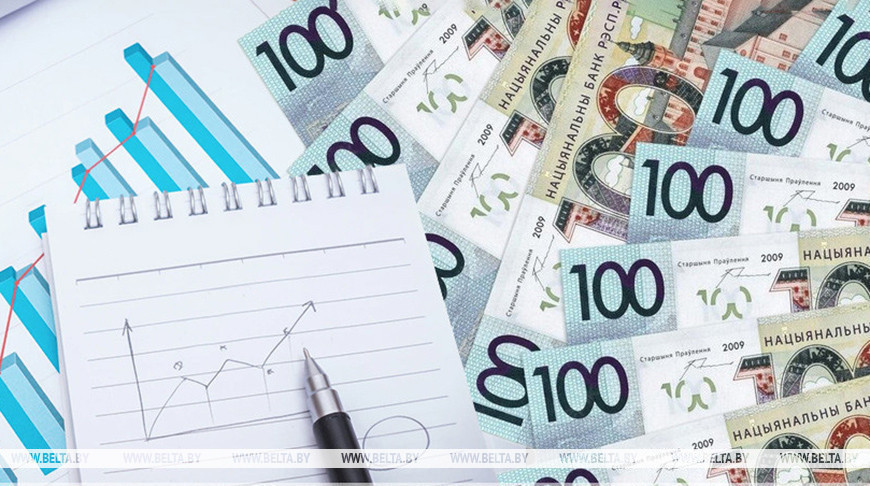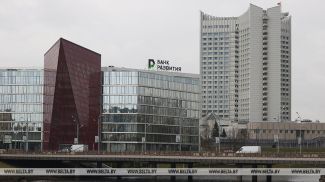
MINSK, 24 June (BelTA) - The Eurasian Development Bank revised the growth forecast upward for Belarus to 3% in 2025 thanks to strong results at the beginning of the year and the expected expansion of credit support for investment, said Anton Dolgovechny, senior analyst at the Center for Country Analysis of the Directorate for Analytical Work of the EDB, BelTA learned.
The EDB previously predicted that in 2025 the Belarusian economy would grow by 2.6%. The bank has now raised its forecast to 3%. In 2026-2027, the EDB expects GDP growth of Belarus at 1.7%.
“After a significant GDP growth in 2023-2024, Belarus maintains an increased rate of economic development this year. In January-May, we see that this is higher than the average pace over the past 15 years. Economic growth is driven by domestic demand. Retail surged by 9.3%, capital investment - by more than 14%. At the same time, there is a slowdown in growth in the manufacturing industry, which has been the main driver in the past few years. Belarus’ GDP growth in 2025 will be supported by a further increase in consumption, which will be supported by rising wages and consumer lending. In addition, investment activity will continue to expand being driven by state programs and easier access to lending for investment projects. The dynamic recovery of the IT sector will also support economic growth,” Anton Dolgovechny said.
A reminder: Belarus’ GDP rose by 3.9% in 2023; by 4% - in 2024.
On 23 June, the Eurasian Development Bank presented a new issue of the macroeconomic forecast for the participating countries for 2025-2027. The EDB countries are expected to maintain strong economic growth in the period under review, despite the tense external economic environment. Countries will continue to actively rely on domestic sources of growth, primarily infrastructure and industrial investment, on robust consumer demand amid a significant increase in household incomes.
EDB analysts also shared their vision of key trends in the global economy and their impact on the Eurasian region. According to them, global economic growth will slow down to 3% in 2025, compared with 3.3% in 2023-2024. Increased uncertainty on the background of U.S. tariff policy and negative structural factors will have a restraining effect on economic activity in the world. Declining consumer confidence and business expectations will slow business activity in the U.S. economy where GDP will grow by 1.4% in 2025 after increasing by 2.8% in 2024. This year the eurozone will experience weak economic growth at about 0.6%, after 0.9% a year earlier. The growth of the Chinese economy will remain close to the target of 5% in 2025 due to the continuation of the policy of stimulating domestic demand.
The EDB previously predicted that in 2025 the Belarusian economy would grow by 2.6%. The bank has now raised its forecast to 3%. In 2026-2027, the EDB expects GDP growth of Belarus at 1.7%.
“After a significant GDP growth in 2023-2024, Belarus maintains an increased rate of economic development this year. In January-May, we see that this is higher than the average pace over the past 15 years. Economic growth is driven by domestic demand. Retail surged by 9.3%, capital investment - by more than 14%. At the same time, there is a slowdown in growth in the manufacturing industry, which has been the main driver in the past few years. Belarus’ GDP growth in 2025 will be supported by a further increase in consumption, which will be supported by rising wages and consumer lending. In addition, investment activity will continue to expand being driven by state programs and easier access to lending for investment projects. The dynamic recovery of the IT sector will also support economic growth,” Anton Dolgovechny said.
A reminder: Belarus’ GDP rose by 3.9% in 2023; by 4% - in 2024.
On 23 June, the Eurasian Development Bank presented a new issue of the macroeconomic forecast for the participating countries for 2025-2027. The EDB countries are expected to maintain strong economic growth in the period under review, despite the tense external economic environment. Countries will continue to actively rely on domestic sources of growth, primarily infrastructure and industrial investment, on robust consumer demand amid a significant increase in household incomes.
EDB analysts also shared their vision of key trends in the global economy and their impact on the Eurasian region. According to them, global economic growth will slow down to 3% in 2025, compared with 3.3% in 2023-2024. Increased uncertainty on the background of U.S. tariff policy and negative structural factors will have a restraining effect on economic activity in the world. Declining consumer confidence and business expectations will slow business activity in the U.S. economy where GDP will grow by 1.4% in 2025 after increasing by 2.8% in 2024. This year the eurozone will experience weak economic growth at about 0.6%, after 0.9% a year earlier. The growth of the Chinese economy will remain close to the target of 5% in 2025 due to the continuation of the policy of stimulating domestic demand.













